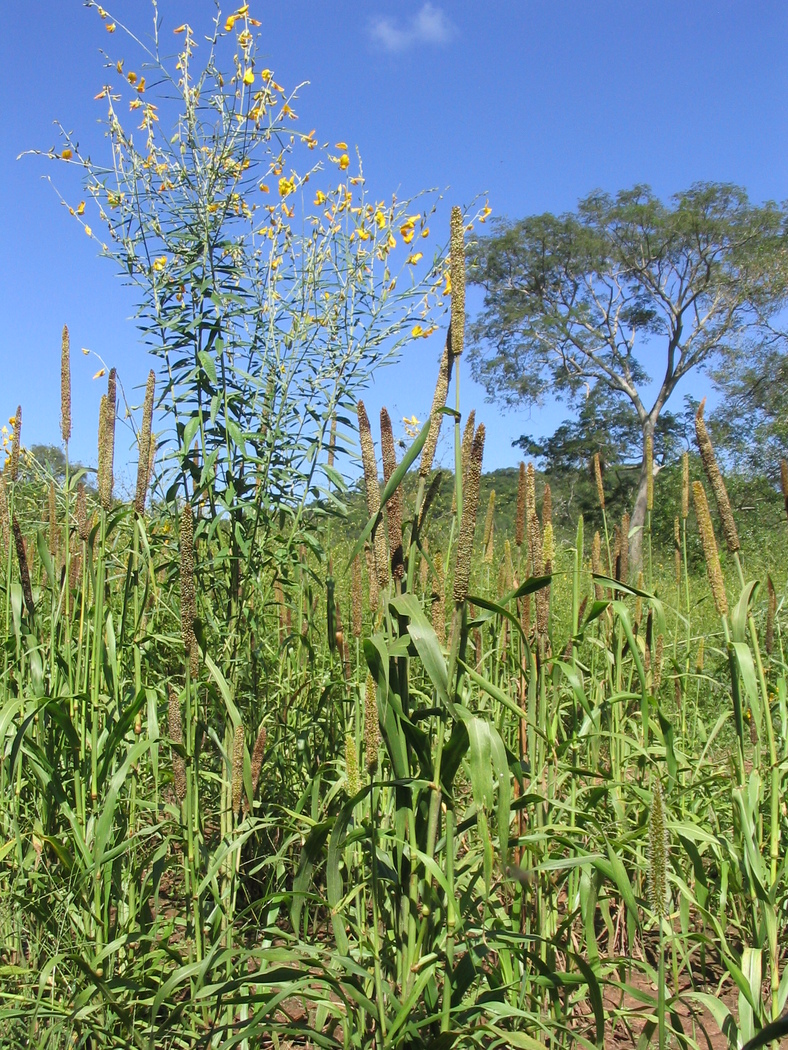
|
source: imi3264.jpg, 1536x2048 2.2mb 2004:04:13 a031110.html (file 96 / 190), 25 April 2005 |
Millet backward | thumbnails | forward | text |
My third year I had nearly sixty different crops in the ground, and last year the number increased to over eighty. One that most interested me was pearl millet; when this plot was only a few weeks old we experienced a serious, six-week drought: not a drop of rain and temperatures above 40 (triple digits, Fahrenheit), every day. This millet was an island of green, growing, healthiness, in a sea of crippled, dying plants. Even the weeds were drying up.
Unfortunately millet is completely unknown in the area; only Don Ernesto and one of our karai neighbors expressed any admiration or interest. I made matters worse by being on the road when it should have been harvested. I think a plant in the field, no matter how pretty or resistent, remains theoretical and unenticing for most people. If I could have provided some of the women with the finished product to cook up, it would have generated much more curiosity.
The plant with the yellow flowers is crotalaria juncea, or sunnhemp. The particular plant in this picture was a volunteer, and even had a slight aleopathic effect on the millet, but in general it was one of my earliest successes. My first year I planted half my corn with crotalaria, to test this aleopathicity on weeds. I didn't notice any such effect then, on the weeds or the corn. On the other hand, every year millions of parrots descend on Ingre to ravage the ripening corn; my field was hit as hard as anyone's but, apparently confused by the yellow flowers, the parrots didn't touch the half with crotalaria. There is no other effective solution to the parrot problem, so this was an experiment I encouraged other people (real farmers) to try throughout my time in the region.